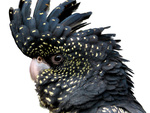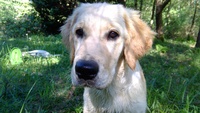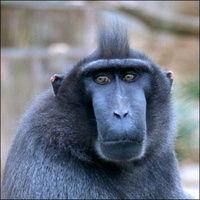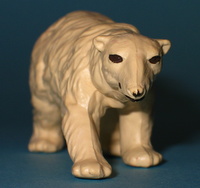| | Mathison Museum of Natural History |  |
|
+23Ana Rakel spacelab Gecko08 Taos Megaptera Duck-Anch-Amun 75senta75 Kikimalou Saarlooswolfhound Bonnie RtasVadumee landrover Advicot Roger rogerpgvg lucky luke Caracal pipsxlch widukind SUSANNE endogenylove bmathison1972 27 posters |
|
| Author | Message |
|---|
lucky luke

Country/State : FRANCE Saint-Louis
Age : 62
Joined : 2010-07-17
Posts : 6296
 |  Subject: Re: Mathison Museum of Natural History Subject: Re: Mathison Museum of Natural History  Sat Dec 26, 2020 7:02 pm Sat Dec 26, 2020 7:02 pm | |
| |
|
  | |
bmathison1972

Country/State : Salt Lake City, UT
Age : 52
Joined : 2010-04-13
Posts : 6710
 |  Subject: Re: Mathison Museum of Natural History Subject: Re: Mathison Museum of Natural History  Sun Dec 27, 2020 1:39 pm Sun Dec 27, 2020 1:39 pm | |
| Species: Odontolabis bellicosa (Laporte de Castelnau, 1840) About the Figure: Manufacturer: DeAgostini Series: World Insect Data Book Year of Release: Unknown Size/Scale: Body length (including mandibles) 8.0 cm, within scale 1:1 Frequency of species in toy/figure form (at time of posting): Unique Miscellaneous Notes: At the time of this writing, I have 22 specimens of Odontolabis representing 13 species; this is one of nine species that are unique. The DeAgostini figures are cast from actual specimens and are therefore all in the 1:1 range. The figures were sold as premiums with books and come in a plastic display box with their Latin and Japanese names. I am not sure what year the figures were released, and it is possible they were released over multiple years. The original set from Japan consisted of 60 species (59 male Scarabaeoidea and one dragonfly), plus four 'secret' figures representing females of select scarab males. When the set was released in Italy, three of the standard set were replaced with other species, including a leaf insect. Between the two releases and secrets, I think there are 67 figures total representing 63 species. The figures are secured to the base of the box with a small screw, but can be safely removed if one choses to display them outside of the box. About the Animal: Geographic distribution: Indonesia Habitat: Rainforest Diet: Unknown; other species of Odontolabis feed on decaying wood as larvae and tree sap and overripe fruit as adults. IUCN Status (at time of posting): Not Evaluated Miscellaneous Notes: I have had trouble researching any information on this species. It is often considered a subspecies of O. dalmani. [You must be registered and logged in to see this image.]
Last edited by bmathison1972 on Mon Dec 28, 2020 3:20 am; edited 1 time in total |
|
  | |
Bonnie

Country/State : UK
Age : 19
Joined : 2020-10-14
Posts : 5584
 |  Subject: Re: Mathison Museum of Natural History Subject: Re: Mathison Museum of Natural History  Sun Dec 27, 2020 1:40 pm Sun Dec 27, 2020 1:40 pm | |
| |
|
  | |
widukind

Country/State : Germany
Age : 48
Joined : 2010-12-30
Posts : 45745
 |  Subject: Re: Mathison Museum of Natural History Subject: Re: Mathison Museum of Natural History  Sun Dec 27, 2020 1:50 pm Sun Dec 27, 2020 1:50 pm | |
| |
|
  | |
Caracal

Country/State : France
Age : 65
Joined : 2018-10-24
Posts : 7252
 | |
  | |
bmathison1972

Country/State : Salt Lake City, UT
Age : 52
Joined : 2010-04-13
Posts : 6710
 |  Subject: Re: Mathison Museum of Natural History Subject: Re: Mathison Museum of Natural History  Mon Dec 28, 2020 1:12 pm Mon Dec 28, 2020 1:12 pm | |
| Species: Prosopocoilus inclinatus (Motschulsky, 1857) About the Figure: Manufacturer: Wing Mau Series: Flying Beetles Year of Release: unknown (Wing Mau's website states 'until 2006' so released in 2006 or earlier) Size/Scale: Body length (excluding mandibles) 4.5 cm, within scale 1:1. Wingspan 9.8 cm Frequency of species in toy/figure form (at time of posting): Common Miscellaneous Notes: Prosopocoilus inclinatus is one of the most commonly made beetle species by Japanese companies; at the time of this writing I have 21 specimens. Today is our second look at this species in this thread. Unlike similar 'flying' figures by Sega, those by Wing Mau do not have bases and do not require assembly. About the Animal: Geographic distribution: Japan, Taiwan, Korean Peninsula Habitat: Oak forests Diet: Larvae breed in rotting logs of Quercus (oak); adults are attracted to sap flows. IUCN Status (at time of posting): Not Evaluated Miscellaneous Notes: Like most other stag beetles, P. inclinatus is sexually dimorphic, with the males having enlarged mandibles. Larger mandibles (as shown in this figure) give a male an advantage in winning the rights to mate with females and securing breeding sites, but come at a cost of limiting mobility such as flight. In a study with a related species, energy costs increase 26% for flight in major males with large mandibles. [You must be registered and logged in to see this image.] |
|
  | |
lucky luke

Country/State : FRANCE Saint-Louis
Age : 62
Joined : 2010-07-17
Posts : 6296
 |  Subject: Re: Mathison Museum of Natural History Subject: Re: Mathison Museum of Natural History  Mon Dec 28, 2020 4:44 pm Mon Dec 28, 2020 4:44 pm | |
| |
|
  | |
Caracal

Country/State : France
Age : 65
Joined : 2018-10-24
Posts : 7252
 |  Subject: Re: Mathison Museum of Natural History Subject: Re: Mathison Museum of Natural History  Mon Dec 28, 2020 7:08 pm Mon Dec 28, 2020 7:08 pm | |
| |
|
  | |
Kikimalou
Admin

Country/State : Lille, FRANCE
Age : 60
Joined : 2010-04-01
Posts : 21169
 |  Subject: Re: Mathison Museum of Natural History Subject: Re: Mathison Museum of Natural History  Mon Dec 28, 2020 9:06 pm Mon Dec 28, 2020 9:06 pm | |
| - bmathison1972 wrote:
- Species: Odontolabis bellicosa (Laporte de Castelnau, 1840)
About the Figure:
Manufacturer: DeAgostini
Series: World Insect Data Book
Year of Release: Unknown
Size/Scale: Body length (including mandibles) 8.0 cm, within scale 1:1
Frequency of species in toy/figure form (at time of posting): Unique
Miscellaneous Notes: At the time of this writing, I have 22 specimens of Odontolabis representing 13 species; this is one of nine species that are unique. The DeAgostini figures are cast from actual specimens and are therefore all in the 1:1 range. The figures were sold as premiums with books and come in a plastic display box with their Latin and Japanese names. I am not sure what year the figures were released, and it is possible they were released over multiple years. The original set from Japan consisted of 60 species (59 male Scarabaeoidea and one dragonfly), plus four 'secret' figures representing females of select scarab males. When the set was released in Italy, three of the standard set were replaced with other species, including a leaf insect. Between the two releases and secrets, I think there are 67 figures total representing 63 species. The figures are secured to the base of the box with a small screw, but can be safely removed if one choses to display them outside of the box.
About the Animal:
Geographic distribution: Indonesia
Habitat: Rainforest
Diet: Unknown; other species of Odontolabis feed on decaying wood as larvae and tree sap and overripe fruit as adults.
IUCN Status (at time of posting): Not Evaluated
Miscellaneous Notes: I have had trouble researching any information on this species. It is often considered a subspecies of O. dalmani.
It's good to know we can free them from their box. |
|
  | |
Bonnie

Country/State : UK
Age : 19
Joined : 2020-10-14
Posts : 5584
 | |
  | |
bmathison1972

Country/State : Salt Lake City, UT
Age : 52
Joined : 2010-04-13
Posts : 6710
 |  Subject: Re: Mathison Museum of Natural History Subject: Re: Mathison Museum of Natural History  Tue Dec 29, 2020 1:18 pm Tue Dec 29, 2020 1:18 pm | |
| Species: Arbanitis rapax (Karsch, 1878) (Sydney brown trapdoor spider) About the Figure: Manufacturer: Cadbury Series: UK Yowies Series 1 Year of Release: 1997 Size/Scale: Diameter of base 3.8 cm. Body length 2.8 cm, within scale 1:1 (small for a mature female) Frequency of species in toy/figure form (at time of posting): Unique Miscellaneous Notes: Cadbury simply marketed this figure as 'trapdoor spider'; the species designation is my own, as A. rapax is a common species in the Sydney area (and Yowies originated in Australia). The Series 1 UK Yowies were released the same year as the Series 1 Australian figures, but were solid-piece plastic (unlike their Australian counterparts that require assembly). Many species are shared between the two sets, but the trapdoor spider does not have an Australian counterpart. The only other figure of a trapdoor spider I am aware of is by Funrise Toys. About the Animal: Geographic distribution: Southeastern Australia (primarily in New South Wales) Habitat: Forests, fields, disturbed areas, and lawns with proper soil to construct burrows Diet: Other arthropods IUCN Status (at time of posting): Not Evaluated Miscellaneous Notes: Despite being one of the 'trapdoor' spiders, burrows of A. rapax are open and do not have a 'door'. Arbanitis rapax is an ambush predator of insects and other arthropods that walk past its burrow. The species is not venomous to humans, but is often mistaken for the very venomous Sydney funnelweb spider ( Atrax robustus) that occurs in the same region. [You must be registered and logged in to see this image.]
Last edited by bmathison1972 on Fri Jan 15, 2021 3:09 pm; edited 1 time in total |
|
  | |
Caracal

Country/State : France
Age : 65
Joined : 2018-10-24
Posts : 7252
 | |
  | |
bmathison1972

Country/State : Salt Lake City, UT
Age : 52
Joined : 2010-04-13
Posts : 6710
 | |
  | |
widukind

Country/State : Germany
Age : 48
Joined : 2010-12-30
Posts : 45745
 |  Subject: Re: Mathison Museum of Natural History Subject: Re: Mathison Museum of Natural History  Tue Dec 29, 2020 6:26 pm Tue Dec 29, 2020 6:26 pm | |
| |
|
  | |
bmathison1972

Country/State : Salt Lake City, UT
Age : 52
Joined : 2010-04-13
Posts : 6710
 |  Subject: Re: Mathison Museum of Natural History Subject: Re: Mathison Museum of Natural History  Wed Dec 30, 2020 12:48 pm Wed Dec 30, 2020 12:48 pm | |
| Species: Mobula alfredi (Krefft, 1868) (reef manta ray) About the Figure: Manufacturer: Colorata Series: Sharks of the World Year of Release: 2004 Size/Scale: Width 9.0 cm for a scale of 1:33-1:38 (scale 1:55 for a maximum-sized specimen) Frequency of species in toy/figure form (at time of posting): Uncommon to common (see below) Miscellaneous Notes: This figure was originally marketed as the giant oceanic manta ray, M. birostris, but morphologically better fits M. alfredi based on the Y-shaped shoulder markings, black ventral spots reaching into the gill area, and lack of a vestigal caudal spine near the dorsal fin. It is important to keep in mind that figure was produced before M. alfredi was re-established as a valid species. Depending on the source material a company used to produce a manta ray, and when it was produced, this species could be considered common or uncommonly made. This Colorata figure scales alright with the Safari 2018 manta, which morphologically represents M. birostris based on sculpt and color! About the Animal: Geographic distribution: Indo-West Pacific Habitat: Benthopelagic, at depths of 1-120 meters Diet: Filter-feeder on zooplankton IUCN Status (at time of posting): Vulnerable Miscellaneous Notes: Although M. alfredi was described in 1868, it was considered a synonym of M. birostris for decades until it was re-established as a valid species in 2009 based on morphological, molecular, and distributional data. A potential third, currently undescribed, species occurs in the Caribbean. [You must be registered and logged in to see this image.] |
|
  | |
Kikimalou
Admin

Country/State : Lille, FRANCE
Age : 60
Joined : 2010-04-01
Posts : 21169
 |  Subject: Re: Mathison Museum of Natural History Subject: Re: Mathison Museum of Natural History  Wed Dec 30, 2020 12:52 pm Wed Dec 30, 2020 12:52 pm | |
| |
|
  | |
rogerpgvg

Country/State : UK
Age : 54
Joined : 2016-04-29
Posts : 3894
 |  Subject: Re: Mathison Museum of Natural History Subject: Re: Mathison Museum of Natural History  Wed Dec 30, 2020 1:01 pm Wed Dec 30, 2020 1:01 pm | |
| I still find it very hard to distinguish between the M. Alfredi and Birostris. Exactly where is the Y-shape? On the shoulder, but where is that? At least I am not the only one who finds it difficult to distinguish the two. Apparently, the manta rays themselves find it difficult too, as a hybrid has been found: [You must be registered and logged in to see this link.] |
|
  | |
Bonnie

Country/State : UK
Age : 19
Joined : 2020-10-14
Posts : 5584
 | |
  | |
bmathison1972

Country/State : Salt Lake City, UT
Age : 52
Joined : 2010-04-13
Posts : 6710
 |  Subject: Re: Mathison Museum of Natural History Subject: Re: Mathison Museum of Natural History  Wed Dec 30, 2020 3:54 pm Wed Dec 30, 2020 3:54 pm | |
| - rogerpgvg wrote:
- I still find it very hard to distinguish between the M. Alfredi and Birostris. Exactly where is the Y-shape? On the shoulder, but where is that?
At least I am not the only one who finds it difficult to distinguish the two. Apparently, the manta rays themselves find it difficult too, as a hybrid has been found: [You must be registered and logged in to see this link.] it is hard to describe, and it is subtle here. So, those white v-shaped markings on the shoulders behind the eyes. On this figure, the side of the 'v' closest to the front of the head is at an angle, diverging away. In M. birostris, the side of the white 'v' closest to the front of the head is more parallel with the front of the head. Luckily this figure also has the ventral coloration and caudal fin morphology c/w M. alfredi. I wouldn't be surprised if a lot of figures hybridize the two species, because the artists may not be aware of the subtle differences and may draw inspiration from photos of both species. Luckily, this Colorata figure is clearly M. alfredi and the 2018 Safari figure is clearly M. birostris. EDIT: The Schleich 2013 figure and CollectA 2006 figure also look like M. alfredi. |
|
  | |
widukind

Country/State : Germany
Age : 48
Joined : 2010-12-30
Posts : 45745
 | |
  | |
rogerpgvg

Country/State : UK
Age : 54
Joined : 2016-04-29
Posts : 3894
 |  Subject: Re: Mathison Museum of Natural History Subject: Re: Mathison Museum of Natural History  Wed Dec 30, 2020 6:46 pm Wed Dec 30, 2020 6:46 pm | |
| Thanks, I can now see that it is more a Y than a T on the Colorata. I had classified the Safari 2018 as a M. alfredi because the black shape looked more like a Y to me and if I remember correctly, the lower jaw is white. I don't have it here, I need to check whether I change my opinion when I see it again. I don't have it, but the Safari 1993 MBA looks like a clear M. birostris, at least the dorsal pattern. |
|
  | |
bmathison1972

Country/State : Salt Lake City, UT
Age : 52
Joined : 2010-04-13
Posts : 6710
 |  Subject: Re: Mathison Museum of Natural History Subject: Re: Mathison Museum of Natural History  Wed Dec 30, 2020 7:03 pm Wed Dec 30, 2020 7:03 pm | |
| - rogerpgvg wrote:
- Thanks, I can now see that it is more a Y than a T on the Colorata. I had classified the Safari 2018 as a M. alfredi because the black shape looked more like a Y to me and if I remember correctly, the lower jaw is white. I don't have it here, I need to check whether I change my opinion when I see it again. I don't have it, but the Safari 1993 MBA looks like a clear M. birostris, at least the dorsal pattern.
When I look at Safari's on their website, it looks more 'Y' but that could be the angle (I thought I compared my actual figure, but I'll have to look again when I get home). I think dorsal and ventral color might be somewhat variable. If you look behind the dorsal fin on the Safari figure, you will see secondary ridges; those are the vestigial stinger that is seen with M. birostris, but not M. alfredi. I'll double-check the shoulder color when I get home. The MBA figure also looks good for M. birostris, yet. |
|
  | |
Caracal

Country/State : France
Age : 65
Joined : 2018-10-24
Posts : 7252
 |  Subject: Re: Mathison Museum of Natural History Subject: Re: Mathison Museum of Natural History  Thu Dec 31, 2020 11:14 am Thu Dec 31, 2020 11:14 am | |
| beautiful replica!  |
|
  | |
bmathison1972

Country/State : Salt Lake City, UT
Age : 52
Joined : 2010-04-13
Posts : 6710
 |  Subject: Re: Mathison Museum of Natural History Subject: Re: Mathison Museum of Natural History  Thu Dec 31, 2020 1:10 pm Thu Dec 31, 2020 1:10 pm | |
| Species: Carcharias taurus Rafinesque, 1810 (sand tiger shark) About the Figure: Manufacturer: Safari Ltd. Series: Wild Safari Sealife Year of Release: 2020 Size/Scale: Body length 16.3 cm for a scale of 1:13.5-1:20.2 Frequency of species in toy/figure form (at time of posting): Uncommon to rare Miscellaneous Notes: There is a small handful of figures of this species available, with this 2020 offering by Safari probably the best by non-Japanese manufacturers. Smaller figures from Japan include one by Colorata in their Sharks of the World Collection, and Kaiyodo produced one in their Aquatales line in conjunction with the Enoshima Aquarium. About the Animal: Geographic distribution: Circumtropical, except apparently the eastern Pacific Habitat: Epipelagic, mesopelagic, reefs, sandy coasts, estuaries, and bays, at depths of 1-191 meters (usually 15-25 meters) Diet: Fish, squid, crustaceans IUCN Status (at time of posting): Vulnerable (globally; select populations classified as Critically Endangered) Miscellaneous Notes: Carcharias taurus is to date the only shark known to gulp air into its stomach to help maintain neutral buoyancy while swimming. Despite its rather fearsome appearance because of its large build and exposed teeth, C. taurus is a docile shark and there are no documented human fatalities caused by it. [You must be registered and logged in to see this image.] |
|
  | |
Kikimalou
Admin

Country/State : Lille, FRANCE
Age : 60
Joined : 2010-04-01
Posts : 21169
 |  Subject: Re: Mathison Museum of Natural History Subject: Re: Mathison Museum of Natural History  Thu Dec 31, 2020 1:50 pm Thu Dec 31, 2020 1:50 pm | |
| Beautiful model, the two Japanese ones are beautiful too. Too bad the Kaiyodo is so rare and expensive. |
|
  | |
Sponsored content
 |  Subject: Re: Mathison Museum of Natural History Subject: Re: Mathison Museum of Natural History  | |
| |
|
  | |
| | Mathison Museum of Natural History |  |
|
